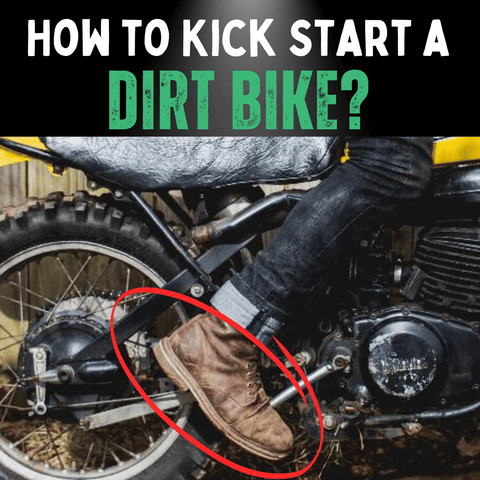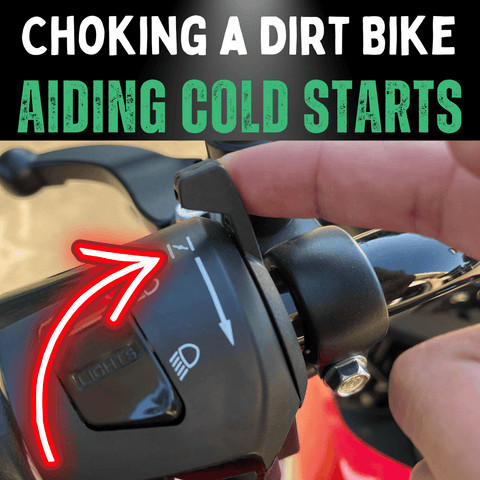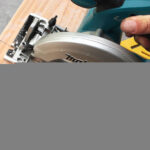How to start a dirt bike? Kickstarting a dirt bike can seem daunting, but it’s a rite of passage for every dirt bike enthusiast. At usabikers.net, we provide a comprehensive guide to help you master this essential skill, ensuring you can confidently hit the trails every time.
This guide will cover everything from preparing your bike to avoiding common mistakes, so you can roar to life like a pro. Explore our website for more tips on dirt bike maintenance, riding techniques, and the latest gear reviews. We provide information and access to community forums where you can connect with fellow riders, access riding tips, and discover community events.
1. Understanding Your Dirt Bike
Before learning how to start a dirt bike, it’s essential to understand the equipment. Every dirt bike model possesses distinct features, but the core principles remain consistent. Your knowledge of the bike’s intricacies enhances your connection with it, similar to understanding a close friend.
1.1 Why Knowing Your Bike Is Important
Understanding your dirt bike is essential for efficient maintenance and troubleshooting. Knowing the make and model allows you to accurately reference the owner’s manual, ensuring you’re following the manufacturer’s recommendations. According to the Motorcycle Safety Foundation (MSF), riders who thoroughly understand their bikes are more likely to perform regular maintenance, leading to safer and more enjoyable riding experiences. Understanding your dirt bike is the base of how to start a dirt bike.
 Understanding Your Dirt Bike's Quirks and Features
Understanding Your Dirt Bike's Quirks and Features
2. Step-by-Step Guide to Kick Starting a Dirt Bike
How to start a dirt bike easily? Follow our step-by-step guide to start your dirt bike with ease.
2.1 Prepare the Bike
To prepare the bike before a ride on local paths or rugged off-road trails, ensure the engine is ready. Check fuel and oil levels, set the bike to neutral, turn the handlebar switch to “ON,” and set the gas line dial to “ON.” These steps ensure a smooth and safe start to your adventure.
2.2 Position Yourself
Stand on the left side of the bike with your left foot grounded and your right foot on the kick starter. This stance prepares you for the kick, ensuring balance and leverage.
2.3 Find the Compression Stroke
Press the kick starter slowly until you feel resistance, which indicates the compression stroke. This resistance signals that the engine is ready to start.
2.4 Build Momentum
Perform a few swift, preliminary kicks to set the pace for the main kick. These kicks help prime the engine and build the necessary momentum for a successful start.
**2.5 Kick Down Firmly
With momentum, firmly kick down on the kick starter. A successful kick results in the engine roaring to life.
2.6 Repeat If Necessary
Repeat the steps if the engine does not start on the first try. Patience is essential, and repeating the process ensures you hit the jackpot.
2.7 Adjust the Choke
Adjust the choke, especially in colder temperatures, according to the manufacturer’s instructions. Each dirt bike has unique choke settings, so consult the owner’s manual for specific guidance.
2.8 Warm Up the Engine
Let the engine idle for a few minutes after starting. This warm-up time ensures all engine components operate smoothly, contributing to longevity and smoother rides.
 Adjusting the Choke on a Dirt Bike
Adjusting the Choke on a Dirt Bike
3. Common Kickstart Mistakes to Avoid
Avoiding common mistakes is essential for starting your dirt bike efficiently. It prevents damage and ensures a smooth start every time.
3.1 Rushing the Process
Avoid rushing the kickstart process, as technique is more important than speed. A hasty kickstart can lead to ineffective starts or engine damage.
3.2 Neglecting the Choke
Always adjust the choke, especially on cold mornings, to ensure the engine is primed and ready. The choke plays a vital role in cold starts.
3.3 Improper Foot Positioning on the Pedal
Ensure your foot is correctly placed on the pedal for optimal results. The angle and force of your kick are crucial for a successful start.
4. Additional Tips and Tricks
Utilize online tutorials for visual guidance on kickstarting techniques. Platforms like YouTube offer helpful demonstrations for visual learners.
4.1 Throttling Tips for 4-Stroke Engines
For 4-stroke engines, crank the throttle fully three times before starting. This action can help wake up the bike and prepare it for ignition.
4.2 After Starting the Bike
Gently place the kick starter back against the bike after starting. This wraps up the process neatly and prevents any accidental interference during your ride.
5. Safety Precautions
Prioritize safety by always wearing protective gear, even when kickstarting. Ensure ample space around the bike to prevent accidents.
6. Differences Between Kids and Adult Dirt Bikes
Kids’ dirt bikes are designed to be lighter and require less force to kick start. Adult bikes may include an electric start option for convenience. Always prioritize safety when biking with the younger generation.
| Feature | Kids’ Dirt Bikes | Adult Dirt Bikes |
|---|---|---|
| Weight | Lighter | Heavier |
| Kickstart Force | Less force required | More force required |
| Starting Options | Kickstart | Kickstart or electric start |
| Safety Priorities | Enhanced safety features | Standard safety features |
7. How to Improve Dirt Bike Starting?
Improving your dirt bike’s starting process involves a combination of maintenance, technique refinement, and understanding your bike’s specific needs. Regular maintenance ensures all components are in optimal condition, while refining your kickstarting technique can make the process more efficient and reliable.
7.1 Regular Maintenance
Ensure your bike’s spark plug is clean and in good condition. A dirty or worn spark plug can cause starting issues. According to a study by the American Motorcyclist Association (AMA), bikes with well-maintained spark plugs start more reliably. Keep the air filter clean to ensure proper airflow to the engine. A dirty air filter restricts airflow, making it harder to start the bike. Check and clean the carburetor regularly to prevent fuel delivery issues. A clean carburetor ensures the engine receives the correct fuel mixture for starting.
7.2 Optimize Starting Technique
Use the correct starting procedure for your bike model. Refer to the owner’s manual for the recommended procedure. Finding the compression stroke before kicking ensures the engine is in the optimal position for starting. A strong, full kick is more effective than multiple weak kicks. Practice your kickstarting technique to build muscle memory and consistency.
7.3 Upgrade Components
Install a high-performance spark plug for improved ignition. High-performance spark plugs provide a stronger spark, making it easier to start the bike. Consider a lithium-ion battery for more reliable starting power. Lithium-ion batteries offer higher cranking power and longer lifespan compared to traditional lead-acid batteries. Evaluate an aftermarket carburetor for better fuel delivery. Aftermarket carburetors can be tuned for optimal performance and easier starting.
7.4 Environmental Factors
In cold weather, use the choke to enrich the fuel mixture. Choking helps the engine start more easily in cold conditions. Store your bike in a warm, dry place to prevent moisture buildup. Moisture can cause corrosion and starting problems.
7.5 Common Issues
Check for common issues like a flooded engine, which can prevent starting. Let the bike sit for a few minutes to allow excess fuel to evaporate. Ensure the battery is fully charged. A weak battery can prevent the starter motor from turning the engine over. Inspect the fuel lines for clogs or leaks. Clogged or leaking fuel lines can restrict fuel delivery, making it difficult to start the bike.
8. The Importance of Proper Gear for Dirt Biking
Proper gear is essential for a safe and enjoyable dirt biking experience. High-quality gear protects you from injuries and enhances your performance on the trails.
8.1 Helmets
A helmet is the most critical piece of gear for dirt biking. It protects your head from impacts in the event of a crash. According to the Motorcycle Safety Foundation (MSF), helmets reduce the risk of head injury by 69%. Look for a helmet that meets DOT (Department of Transportation) or Snell safety standards. These standards ensure the helmet has been tested and certified to provide adequate protection. Ensure the helmet fits snugly and comfortably. A loose helmet can move around during a crash, reducing its effectiveness.
8.2 Goggles
Goggles protect your eyes from dust, debris, and the sun. They provide clear vision, allowing you to navigate the trails safely. Choose goggles with anti-fog lenses to prevent fogging in humid conditions. Ensure the goggles fit securely with the helmet. A good fit prevents the goggles from slipping or moving around while riding.
8.3 Gloves
Gloves protect your hands from blisters, abrasions, and impacts. They also provide a better grip on the handlebars. Look for gloves with reinforced palms and knuckles for added protection. Ensure the gloves fit comfortably and allow for good dexterity.
8.4 Boots
Boots provide ankle and foot support, protecting you from injuries. They also offer better grip and control on the footpegs. Choose boots with reinforced ankles, toes, and shins for maximum protection. Ensure the boots fit comfortably and provide good support.
8.5 Protective Armor
Body armor, such as chest protectors, elbow pads, and knee pads, provides additional protection for your vital organs and joints. These protective gears can help prevent serious injuries in a crash. Look for armor that is comfortable and allows for a full range of motion.
8.6 Riding Apparel
Proper riding apparel, such as jerseys and pants, can protect your skin from abrasions and the elements. These apparel keeps you cool in hot weather and warm in cold weather. Choose apparel made from durable, breathable materials. Ensure the apparel fits comfortably and allows for a full range of motion.
8.7 Additional Accessories
Neck braces can help prevent neck injuries in a crash. Hydration packs allow you to stay hydrated while riding. Communication systems enable you to communicate with other riders.
By wearing the appropriate gear, you can significantly reduce your risk of injury and enjoy a safer, more comfortable dirt biking experience.
9. Benefits of Joining a Dirt Biking Community
Joining a dirt biking community offers numerous benefits, from sharing experiences and tips to finding new riding buddies and staying informed about local events.
9.1 Knowledge Sharing
Experienced riders can share their knowledge and expertise with newcomers. You can learn valuable tips and techniques for improving your riding skills. Members can provide advice on bike maintenance, troubleshooting, and gear selection.
9.2 Social Connections
You can connect with like-minded individuals who share your passion for dirt biking. Develop lasting friendships and build a support network within the community. Find new riding buddies and explore new trails together.
9.3 Group Rides and Events
Participate in organized group rides and events. Group rides offer a fun and social way to explore new trails and improve your skills. Attend local races, rallies, and other dirt biking events.
9.4 Safety in Numbers
Riding with a group can enhance safety, especially in remote areas. Group members can provide assistance in case of breakdowns or injuries. The American Motorcyclist Association (AMA) advocates for group riding as a way to promote safety and camaraderie.
9.5 Access to Resources
Communities often have access to exclusive resources, such as trail maps, maintenance guides, and gear discounts. Members can share information about the best riding spots and local resources. Stay informed about trail closures, weather conditions, and other important updates.
9.6 Advocacy and Support
Dirt biking communities can advocate for trail access and responsible riding practices. Support efforts to protect and maintain riding areas. Promote a positive image of dirt biking and responsible land use.
10. Explore Riding Spots in the USA
The USA offers a wide array of riding spots for dirt biking enthusiasts, ranging from challenging mountain trails to scenic desert landscapes.
10.1 Moab, Utah
Moab is renowned for its stunning red rock formations and world-class trails. Slickrock trails provide a unique and challenging riding experience. The annual Moab Easter Jeep Safari attracts off-road enthusiasts from around the globe.
10.2 Taylor Park, Colorado
Taylor Park offers a vast network of trails through the Rocky Mountains. Alpine meadows and forests provide breathtaking scenery. The area is popular for both dirt biking and OHV riding.
10.3 Ocala National Forest, Florida
Ocala National Forest features sandy trails and lush forests. The area offers a mix of easy and challenging trails suitable for all skill levels. The Florida Trail Riders Association hosts events and promotes responsible riding practices.
10.4 Hatfield-McCoy Trails, West Virginia
The Hatfield-McCoy Trails system offers over 700 miles of trails through the Appalachian Mountains. The area is known for its rugged terrain and diverse riding experiences. The trails are open to dirt bikes, ATVs, and other off-road vehicles.
10.5 Imperial Sand Dunes, California
The Imperial Sand Dunes, also known as Glamis, offer a unique desert riding experience. The vast dunes provide endless opportunities for sand riding and exploration. The area is popular for both day trips and extended camping trips.
10.6 Black Hills National Forest, South Dakota
The Black Hills National Forest features a mix of forest trails and rocky terrain. The area offers scenic views and challenging riding opportunities. Sturgis, home to the famous Sturgis Motorcycle Rally, is located in the Black Hills.
10.7 Cahuilla Creek Motocross, California
Cahuilla Creek Motocross Park offers a premier motocross riding experience. The park features multiple tracks for different skill levels. The park hosts races and events throughout the year.
These riding spots represent just a fraction of the many incredible destinations for dirt biking in the USA. Each location offers unique terrain, scenery, and riding experiences, making the USA a premier destination for dirt biking enthusiasts.
Conclusion
Kickstarting your dirt bike is a rite of passage for every enthusiast. With practice, you’ll be kickstarting like a pro. After all, every long ride begins with a single, firm kick. Check out usabikers.net for more tips and tricks to enhance your dirt biking experience!
FAQs
What should I check if my dirt bike doesn’t start after multiple kick attempts?
If your dirt bike doesn’t start after multiple kick attempts, it may be flooded with too much fuel in the cylinder. Let the bike sit for a few minutes to allow excess fuel to evaporate, or consult the owner’s manual for resolution.
How often should I maintain my dirt bike to guarantee it starts easily?
Regular maintenance hinges on usage. Perform routine checks before every ride, including chain oiling, air filter replacement, and tire pressure monitoring. More extensive servicing is typically needed every 100 hours of use.
I’ve heard about dirt bikes with electric starters. How do they work?
Electric starters work similarly to those in cars, using an electric motor powered by the bike’s battery to spin the engine. A weak battery can inhibit the motor’s ability to start the engine effectively.
Are there any specific techniques for kickstarting a dirt bike for kids?
Yes, kids’ dirt bikes are designed to be lighter and require less force. Ensure the child uses proper foot positioning and avoids forcing the kick.
What type of engine oil is best for my dirt bike?
The best engine oil for your dirt bike depends on the bike’s make and model. Always refer to the owner’s manual for recommended oil types and viscosity.
How do I know if my dirt bike’s spark plug needs to be replaced?
Signs of a worn spark plug include difficulty starting, rough idling, and reduced performance. Inspect the spark plug for signs of wear, such as a fouled or cracked electrode.
What is the proper way to clean the air filter on my dirt bike?
To clean your dirt bike’s air filter, remove the filter and wash it with a mild detergent and water. Allow the filter to dry completely, then oil it with air filter oil before reinstalling it.
How can I improve my dirt bike’s fuel efficiency?
To improve your dirt bike’s fuel efficiency, ensure the air filter is clean, the spark plug is in good condition, and the carburetor is properly tuned. Avoid aggressive acceleration and maintain a steady speed.
What are some common signs of a worn clutch on a dirt bike?
Common signs of a worn clutch include slipping, difficulty shifting, and a spongy feel in the clutch lever. Inspect the clutch plates for signs of wear or damage.
How can I adjust the suspension on my dirt bike for different riding conditions?
To adjust the suspension on your dirt bike, refer to the owner’s manual for recommended settings. Adjust the compression and rebound damping to suit the terrain and your riding style.
Contact us at usabikers.net, Address: 801 Sturgis Main St, Sturgis, SD 57785, United States. Phone: +1 (605) 347-2000. Explore our articles, participate in our forums, and connect with a thriving community of fellow enthusiasts. Discover the best riding spots, expert maintenance tips, and the latest gear reviews, all in one place.


